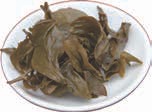
 |
|
In 1644, the Manchus once again conquered China, beginning the Qing Dynasty. Around that time, huge waves of immigrants moved to Taiwan to start new lives, often running from the economic/political problems resulting from such dynastic change. Most of these immigrants came to Taiwan from Fujian, one of the brightest leaves on the great tree of Chinese tea, for Fujian is the birthplace of oolong tea, as well as many other kinds of famous tea. Even today, it is a certain stop on any tea lover's tour of tea mountains, including Wuyi Mountain, where Cliff Tea (Yan Cha) is grown, Anxi, birthplace of Iron Goddess (Tieguanyin), and Fu Ding, where white tea comes from... It should come as no surprise, then, that the settlers from such a tea land would bring tea with them, hoping to plant it on the magical island they saw shimmering above the mist, rising out of the ocean like the great turtle their beloved Guanyin rides through the Heavenly waters.
The tea that those early settlers brought thrived in Taiwan, especially in the mountains. The soil is rich in volcanic minerals and the mists that come in from the seas fill the valleys and highlands with the moisture that tea loves. The humidity, temperature, rainfall, mists and clouds as well as the gravelly soil are all ideal for tea growth - so much so that you have to wonder if the Fujianese found that out after they brought tea, or if they brought tea after they realized how suitable the island would be for its cultivation. Of course, the destiny of the tea trees was also rewritten by the journey across the strait...
One of the ancient names for tea is "Immovable." All the earliest tea sages had to find wild tea trees, gathering leaves like any other sacred herb. It took a long time for tea to be domesticated. For many thousands of years, tea trees were of the forest - a medicine that the shamans and Daoist mendicants sought out for its spiritual effects. Eventually, though, tea was domesticated, and then carried further by people than it could have spread on its own. Soon enough, tea was propagated on many mountains in China, and new varietals started to evolve, with amazing new characteristics, flavors, aromas and Qi. This rich diversity continues to unfold today.
Like many plants, every tea seed is unique, allowing it to rapidly evolve to new environs. And without any of the grafting technology used in plantation agriculture today, all the traditional teas were what we call "living tea," which, as many of you will remember, means that they were seed-propagated, allowed room to grow, lived in biodiversity, grown without agrochemicals, not irrigated and were cultivated with respect. The early farmers quickly realized that when you moved tea to a new location, it changed completely to suit its new home. As such, you could say that tea becomes its environment, as the surroundings become the tea.
As a sacred herb, tea has always decorated Chinese relationships, from business deals to spiritual transmissions, offerings to the gods and even weddings. Even today, the Chinese wedding ceremony is centered around tea: the bride makes tea for the groom, and his acceptance of the tea into his body is an acceptance of his new wife. One of the other aspects of why tea was used in such relationships is precisely that they also hoped these commitments would be "Immovable."
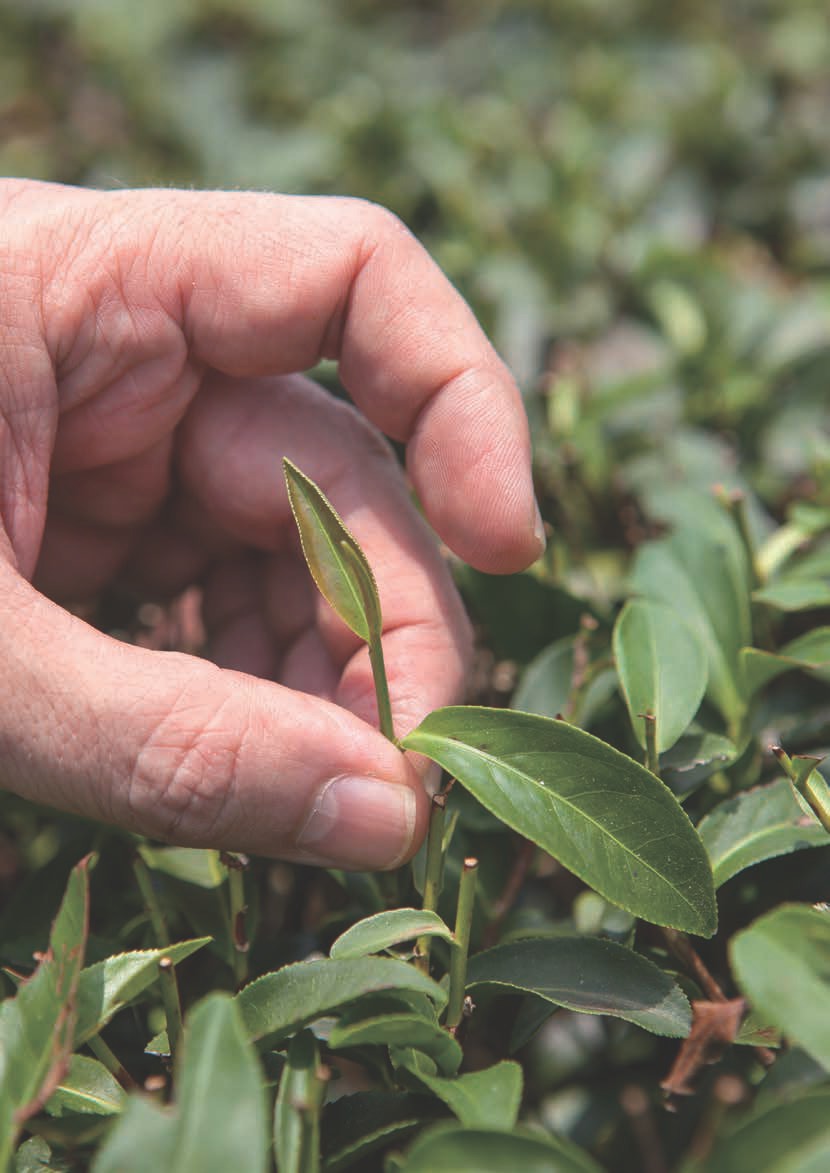
It should therefore come as no surprise that the tea trees planted in Taiwan quickly developed unique personalities due to the terroir here. It's amazing how quickly this happens, especially when skilled craftsmen are involved. Not only do the trees evolve into new varietals naturally, but farmers begin to create new hybrids, researching the differences in search of wonderful new teas. They also adapt their processing methodologies over time, listening to how the leaves want to be dried. Great skill (gongfu) is always a listening to the medium. In tea brewing, for example, we try to brew the tea as it wants to be brewed. Similarly, master tea makers adapt their processing to suit the leaves, the season, the rainfall, etc. Saying that they processed the tea the way it "wanted" to be processed is perhaps misleading, but English lacks the proper sentiment. More literally, what we mean by this is that as new varietals evolved to new environments, influenced by the unique terroir there, the farmers also evolved their processing - testing and experimenting, "listening" to the results as they drank each year's tea, and slowly changing their methods to bring out the best in the tea. In fact, bringing out the best qualities of that varietal is what we mean by processing the tea the way it "wants" to be processed. You could say the same about brewing any particular tea.
The terms "varietal" and "cultivar" are used often in discussions of tea trees. "Varietal" is a more general term referring to any difference below the level of species, whereas "cultivar" refers to a man-made varietal. So a cultivar is a kind of varietal, in other words. Sometimes, in the West, any herb in hot water is referred to as "tea." However, tea lovers like us will call an herbal brew "tisane," and leave "tea" to tea, which is a group of camellia trees. Botanically, all camellias are in the family Theaceae (which comes from the Greek "Thea," or "Goddess"), along with other species like stewartia. Within that family of plants is the genus Camellia, which is then subdivided into groups, one of which is "Thea," which refers to all camellia leaves used for tea (or Goddess worshp, in other words). There are a couple dozen species in the group "Thea," including Camellia sinensis, irrawadiensis, taliensis, and some others. All of the "Thea" species of camellia are considered to be tea. A varietal or cultivar is a subdivision of any one of those species, with the vast majority of varietals/cultivars found in the species Camellia sinensis. Obviously, the world of tea trees is vast, and much more complicated than you'd think. There are more varietals in Yunnan, the birthplace of all tea, than the rest of the world combined. And many of those varietals are not cultivars, but created by Nature.

With the help of the Portuguese, Dutch, and later the Japanese, Taiwanese tea production would gain international repute. From 1895 to 1945, Taiwan was under Japanese rule. At that time, the Japanese sought to increase all agricultural production island-wide and took a great interest in Taiwanese tea. With the help of local farmers, they formed the Taiwan Oolong Tea Research and Development Station in 1926. They focused on research into new varietals of tea that would be suited to different terroirs around the island. They hoped to optimize desirable flavors, aromas and other characteristics in Taiwanese oolongs and also promote a greater resistance to pests, foreboding the detrimental effects pesticides could have on sustainable agriculture. They also brought large-leaf seeds from Assam to central Taiwan, creating the plantations near Sun Moon Lake that were later abandoned, after the Japanese left, and have recently been tended again to produce marvelous, wild red tea.
There is magic in the way tea trees have changed over time, evolving into new varietals based on their terroir. When you see just how much variety there is in the tea world, you can't help but feel some awe, as well as a sense of great excitement and adventure, for there is so much to learn, so many teas to taste and so many cups to share! Some of the famous varietals of tea are wild mutations, created by the energies of Nature and Earth, while others are the genius of generations of farmers and masters who devoted their lives to the Leaf. And looking back at the many millennia of culture, heritage and spirit that have gone into tea, a Chajin (tea person) can't help but be overwhelmed with gratitude.
When it comes to Taiwanese varietals, there is a lot of misinformation and debate about details. Much of what a farmer understands about the fine details of tea genetics, hybrids and varietals is uninteresting to us. Still, a basic understanding of the main varietals of oolong that have made Taiwan famous is worthwhile, especially the "Three Daughters," as they are called. In exploring the amazing variety of tea that have made Taiwan famous, we can learn about the heritage, culture and history of tea here, and also about the amazing variety of energy and healing available through tea.
Many of you will recall that there are two broad categories of tea trees, big leaf and small leaf. Big leaf tea trees are the original tea, born in Yunnan. They have a single trunk, with roots that grow deeper and more downwards. As tea traveled north and east, whether propagated naturally or carried by man, it evolved to suit the colder climes. Small leaf tea is more of a bush, with several trunks and, of course, smaller leaves. In fact, the further north you go, the smaller the leaves - until you get to Japan, where the leaves are so small they are like needles when they are dried and rolled. And all oolong tea is considered small leaf tea.
Oolong tea in Taiwan can be broadly divided into two main categories: the traditional varietals that were brought from the mainland and the hybrids which were researched and developed specifically in Taiwan. As we discussed earlier in this issue, when we explored the Tea of the Month and in the introduction, the traditional, classical varietals were brought over with immigrants during the Qing Dynasty. The native hybrids, on the other hand, are the result of decades of research that began when the Japanese controlled Taiwan from the end of the 19th century up until WWII. The work the Japanese initiated, with the help of local farmers, continued after they left and resulted in the creation of the Three Daughters of Taiwan in the 1970s, all of which have contributed greatly to the success and fame of Taiwanese oolong. There are also many, many other cultivars that we won't have time to cover, as they are not used often or are used to make red tea, for example. In order to better understand and appreciate Taiwanese tea, let's explore some varietals.
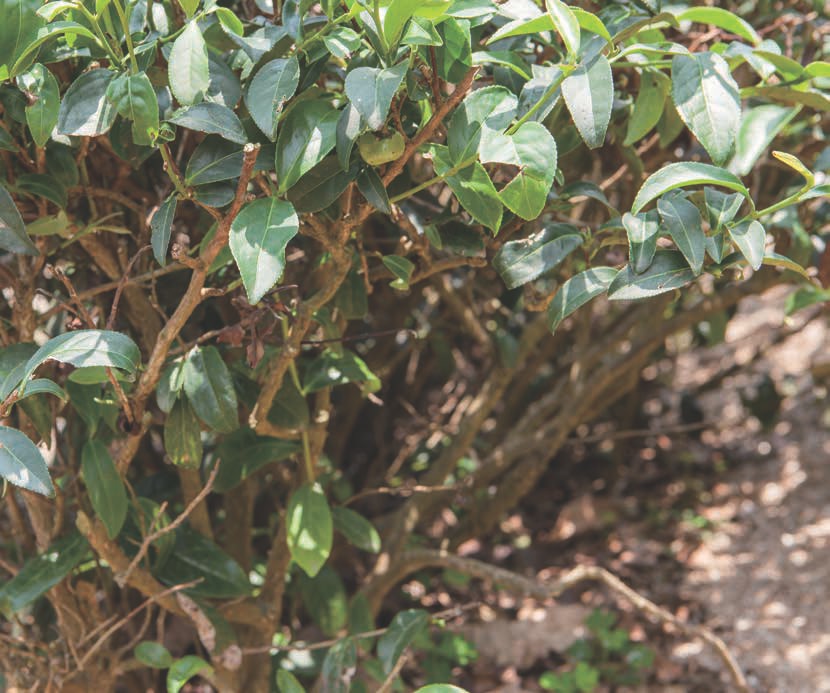
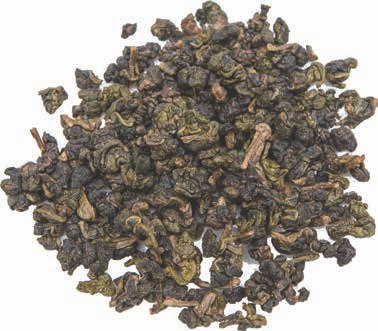
At the start of the Qing Dynasty, farmers transplanted several varietals to Taiwan, mostly bringing them from Wuyi. All the varietals that they brought were lesser-known and undervalued teas. The famous varietals, like the Four Famous Teas of Wuyi, were protected and weren't allowed to travel. Even within Wuyi, it isn't easy to get cuttings of first, or even second-generation Da Hong Pao, for example. Several of these varietals were later abandoned, found to be unsuitable to Taiwan's unique terroir, while others still thrive here - in new and bright forms only found on this island.
In Beipu and Miaoli, where Eastern Beauty comes from, they have Huang gan (黃柑) and Ching shin da mo (青心大冇), the latter of which can also make a nice green tea. In Pinglin, and to a lesser extent in Beipu and central Taiwan, there is also the Wuyi tea varietal (sometimes called "Da ye (大葉)," which means "big leaf," though that's confusing because it isn't a big-leaf tea tree; it merely has larger leaves than other varietals in Taiwan). There is also the legendary Tieguanyin varietal (鐵觀 音品種), brought from Anxi, Fujian and cultivated primarily in Taiwan's Muzha region. The most famous of the tea varietals that were brought here from the mainland long ago, however, is Ching shin oolong, which means "Gentle Heart."
Some say Gentle Heart oolong is named after the tenderness of the fresh leaves, while others suggest that the name refers to the fact that this kind of tea tree is sensitive. Ching shin doesn't do well at lower altitudes, since the trees can get sick easily, having delicate constitutions. Ching shin is by volume the largest percentage of Taiwanese high-mountain oolong, thriving at high altitudes where the air is fresh, clean and cool. This makes Ching shin unique. Of the four tea varietals we are going to discuss in this article, Ching shin is closer genetically to Four Seasons Spring (Si ji chun, 四季春). It also produces the best and highest quality Taiwanese high-mountain oolong teas. With the right terroir and processing, a Ching shin oolong can shine brightly, indeed.
In order to distinguish these four teas, you have to look at the leaves, their shape, and most especially the veins. All tea leaves have a central vein that travels from the stem to the tip, but it's the branching veins that help determine the varietal. Ching shin and Si ji chun both have branching veins that join the central vein at angles from 30 to 60 degrees, while Jing shuan (金萱) and Tsui yu (翠玉) display veins that come out at an 80to 90-degree angle (almost straight). You can then separate the pairs by looking at the shape because Tsui yu and Ching shin are longer and thinner shaped, while Jing shuan and Si ji chun are rounder. We'll highlight these characteristics again as we discuss each varietal individually.
Ching shin tea has a dark green hue when viewing the bushes in a row, though color is never a clear determiner - not without analyzing the leaves. The foliage is also not as dense or vibrant as Tsui yu or Jing shuan cultivars.
Ching shin tea is often produced as lightly oxidized oolong nowadays. It has a refreshing flavor with a light liquor that tastes of flowers, green leafy vegetables or orchids. The light greenish-yellow to yellow liquor is clear and thin, with some bitter astringency at the front, and a lasting huigan (a sensation of cool, mintiness on the breath) when it is processed properly. The Qi is light and uplifting, cooling and breezy.
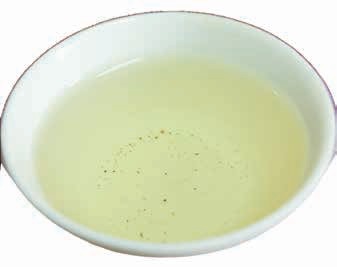

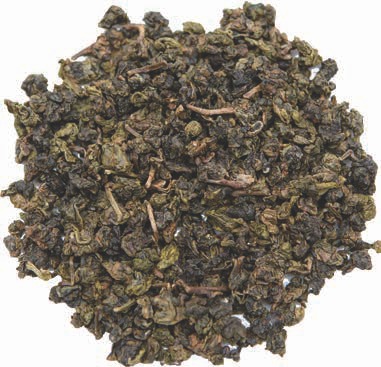
Jing shuan oolong is a hybrid that was established in the 1970s. Its Taiwanese number is TW #12, though farmers often refer to it as "2027" or just "27." These numbers refer to the process the Taiwan Oolong Tea Research and Development Station used to classify the teas as they were developing and testing them. As mentioned above, the leaves of Jing shuan are rounder while the branching veins come off the central vein at an almost right angle (80 to 90 degrees). From a distance, the bushes have a yellowish-green hue, which may also help distinguish this cultivar. Jing shuan tea is primarily grown on Mt. Zhu in central Taiwan. It doesn't thrive in the extreme cold of very high altitude gardens or plantations like Ching shin, but isn't as susceptible to cold as Tsui yu. When it is healthy, Jing shuan has more vibrant foliage than other varietals.
Jing shuan is one of the easiest of the four teas to distinguish. The dry leaves have a golden, yellowish-green hue, as does the liquor. Jing shuan is famous for its milky texture and fragrance - often referred to as "Milk Oolong." There is misinformation in the tea world that this name is due to the use of milk as fertilizer, but the name actually comes from the tea liquor itself: Jing shuan is thick and creamy, and if the terroir is right, with more sun, and the processing has been done well, it has a definite milky aroma which is very pleasing. Its fame has resulted in fake "Milk Oolongs" produced in mainland China that are sprayed with artificial milk flavors post production, giving them a strong and unnatural fragrance of milk. (Yuck!) Real Jing shuan has only a subtle hint of a milky fragrance in the aftertaste. The thick, oily liquor coats the throat. It has a deep and lasting Qi that resonates inwards.
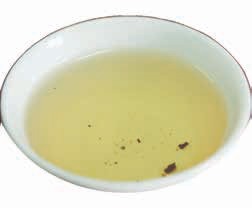



Tsui yu oolong is also a hybrid that came to life in the 1970s, after decades of research. In the Taiwanese index, it is TW #13, though farmers often refer to it as "2029" or just "29." Like Jing shuan, the leaves of Tsui yu have veins at 80to 90-degree angles, though they are long and arrowhead-shaped. When you stand back from a field of Tsui yu, the leaves have a bluish-green (kingfisher) tint to them and they are more vibrant, with lusher foliage than all the other four varietals we will discuss here. Tsui yu dislikes cold weather, so it can't be grown at very high altitudes. It is predominantly grown on Mt. Zhu and in the lowlands around Ming Jian.
Tsui yu has a flavor of seaweed, lima beans and often fruit. It is more famous for an aroma of wildflowers and an aftertaste of fresh fruit. Some say it tastes of lotus or lilac; others say cassia or peach. Much of this depends on the terroir, the season and the skill of the producer. The Qi is yin. It centers you in the heart.
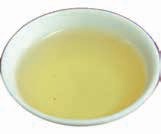
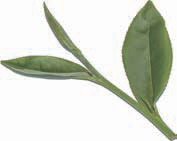


Though you could perhaps call Si ji chun a hybrid, it is a natural, wild varietal that arose in Muzha. Since it is a more natural varietal, it is heartier than the others. This is a testament to one of the principles we always promote in these pages when discussing what we call "living tea," which is that the leaves produced by man will never compare to Nature's. It's possible to further distinguish man-made teas by calling them "cultivars." These trees yield buds at least four times a year, which is where its name comes from. "Si ji chun" might also be translated as "Four Seasons like Spring," referring to the fact that this bush can produce as much in other seasons as in spring. It is also thought to be the youngest of the Three Daughters, coming into commercial production in the 1980s. Si ji chun does not have a Taiwan classification number, since it evolved naturally. Of the four teas here, Si ji chun is more closely related to Ching shin than it is to Jing shuan or Tsui yu. The leaves of Si ji chun are round in shape with veins that shoot off at 30- to 60-degree angles. The leaves have a light green hue, with less foliage like Ching shin. The buds of Si ji chun are often a gorgeous reddish hue when they emerge, which is a common mutation for many varietals of tea around the world.
As some of you will remember from June of 2013 when we sent out this fabulous tea, Si ji chun has an exuberant, golden liquor that blossoms in a fresh, musky floweriness. It is tangy with a slightly sour aftertaste, like the Tieguanyin varietal it evolved from. Many Taiwanese compare the aroma to gardenias. Of these four teas, it has the most distinguishable flavor. The Qi is cleansing, pushing outward from the center. It rises up in gusts, and leaves you feeling refreshed.


